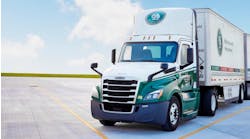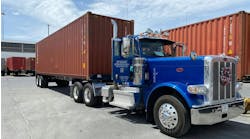Fall is the time of year when many state and national trucking associations are planning or updating their fleet safety award contests. Typically, these contests are judged based on preventable accident rate and/or peer review of documented safety programs.
The philosophy behind these contests is to recognize companies that have achieved noteworthy safety benchmarks. Trade associations and industry sponsors believe such programs provide the initiative to improve highway safety while increasing member involvement and participation in programs that portray positive industry image.
I've heard both motor carrier and insurance industry peers question the legitimacy of some of these programs, however. First of all, they're concerned that a fleet's “preventable accident rate” is not a comprehensive measure of safety. Second, the criteria used in accident reporting is not uniform; some fleets include all incidents, even minor “scratch the paint” scenarios, while others include only incidents above a minimum damage level. Then there's the criticism that some programs lack an independent audit of the fleets that enter the contests.
Don't get me wrong. Most award winners are more than deserving of their safety recognition. Wal-Mart, for example, has received numerous fleet safety awards. In addition to an extremely low accident rate, records indicate that fewer than 50 of the fleet's 5,400 drivers were placed out of service during the past two years. ABF Freight System, Quality Carriers and Stevens Transport are all winners with similar stories.
But awards have also been presented to fleets with less-than-stellar records. A recent example is a fleet with a driver “out of service” rate nearly 1.5 times the national average. Examples like that lead me to believe that our industry should take measures to improve the credibility of these awards.
One step would be to require minimum performance standards, such as maintaining vehicle and driver out-of-service limits above the national average and SafeStat scores below 50 in all SEA rankings. A fleet's performance would be documented with a current SafeStat and Safer report, which would accompany the contest entry. To raise the bar even higher, these standards could be included in the judging criteria.
The advantage to this is that out-of-service rates and SafeStat scores are nationally recognized criteria. And since they're determined by a government safety enforcement agency, they're pretty much insulated from subjectivity. In addition, winners could receive even more recognition if data such as preventable accident rate, inspection performance and SafeStat rankings were disclosed.
The disadvantage of this approach is the issue of data accuracy. Fleets would have to make sure that the government has accurate information by periodically updating MCS-150 forms to reflect current driver and vehicle size. Some SafeStat measures (accident involvement and moving violation indicators, for example) use the number of drivers and/or power units in calculating fleet safety ratios.
Fleets would also have to ensure that only their own crash and inspection data were used to determine their safety ranking. All too often, we've seen cases where another fleet's crashes or out-of-service incidents were inadvertently included in a carrier's profile.
But is such an approach practical? Absolutely. Scrutinizing and managing roadside safety performance reflects a commitment to best industry practices. In addition, reliable measures such as low driver/vehicle out-of-service rates and SafeStat values are an indication of a fleet's overall commitment to safety. Awards that include these comprehensive measures of performance would be much more valuable.
So here's the challenge. Get involved in the contests; position your fleet to be recognized as a superior safety performer. Then, urge your peers to raise the standards for these programs. All of this could do a great deal to improve our industry's safety image.
Jim York is a senior risk engineering consultant at Zurich Insurance, Fredericksburg, Va.


